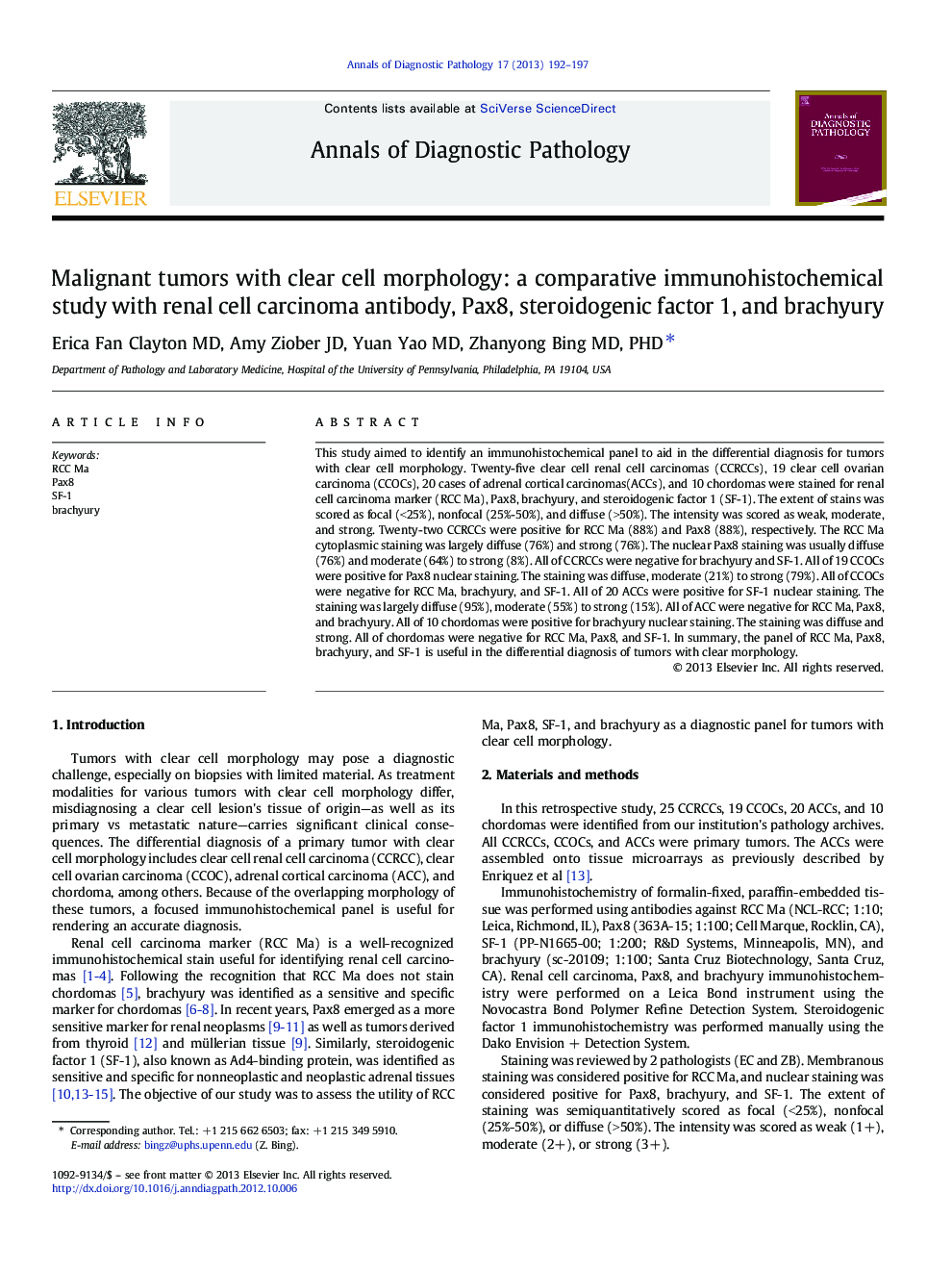| Article ID | Journal | Published Year | Pages | File Type |
|---|---|---|---|---|
| 4130307 | Annals of Diagnostic Pathology | 2013 | 6 Pages |
This study aimed to identify an immunohistochemical panel to aid in the differential diagnosis for tumors with clear cell morphology. Twenty-five clear cell renal cell carcinomas (CCRCCs), 19 clear cell ovarian carcinoma (CCOCs), 20 cases of adrenal cortical carcinomas(ACCs), and 10 chordomas were stained for renal cell carcinoma marker (RCC Ma), Pax8, brachyury, and steroidogenic factor 1 (SF-1). The extent of stains was scored as focal (<25%), nonfocal (25%-50%), and diffuse (>50%). The intensity was scored as weak, moderate, and strong. Twenty-two CCRCCs were positive for RCC Ma (88%) and Pax8 (88%), respectively. The RCC Ma cytoplasmic staining was largely diffuse (76%) and strong (76%). The nuclear Pax8 staining was usually diffuse (76%) and moderate (64%) to strong (8%). All of CCRCCs were negative for brachyury and SF-1. All of 19 CCOCs were positive for Pax8 nuclear staining. The staining was diffuse, moderate (21%) to strong (79%). All of CCOCs were negative for RCC Ma, brachyury, and SF-1. All of 20 ACCs were positive for SF-1 nuclear staining. The staining was largely diffuse (95%), moderate (55%) to strong (15%). All of ACC were negative for RCC Ma, Pax8, and brachyury. All of 10 chordomas were positive for brachyury nuclear staining. The staining was diffuse and strong. All of chordomas were negative for RCC Ma, Pax8, and SF-1. In summary, the panel of RCC Ma, Pax8, brachyury, and SF-1 is useful in the differential diagnosis of tumors with clear morphology.
